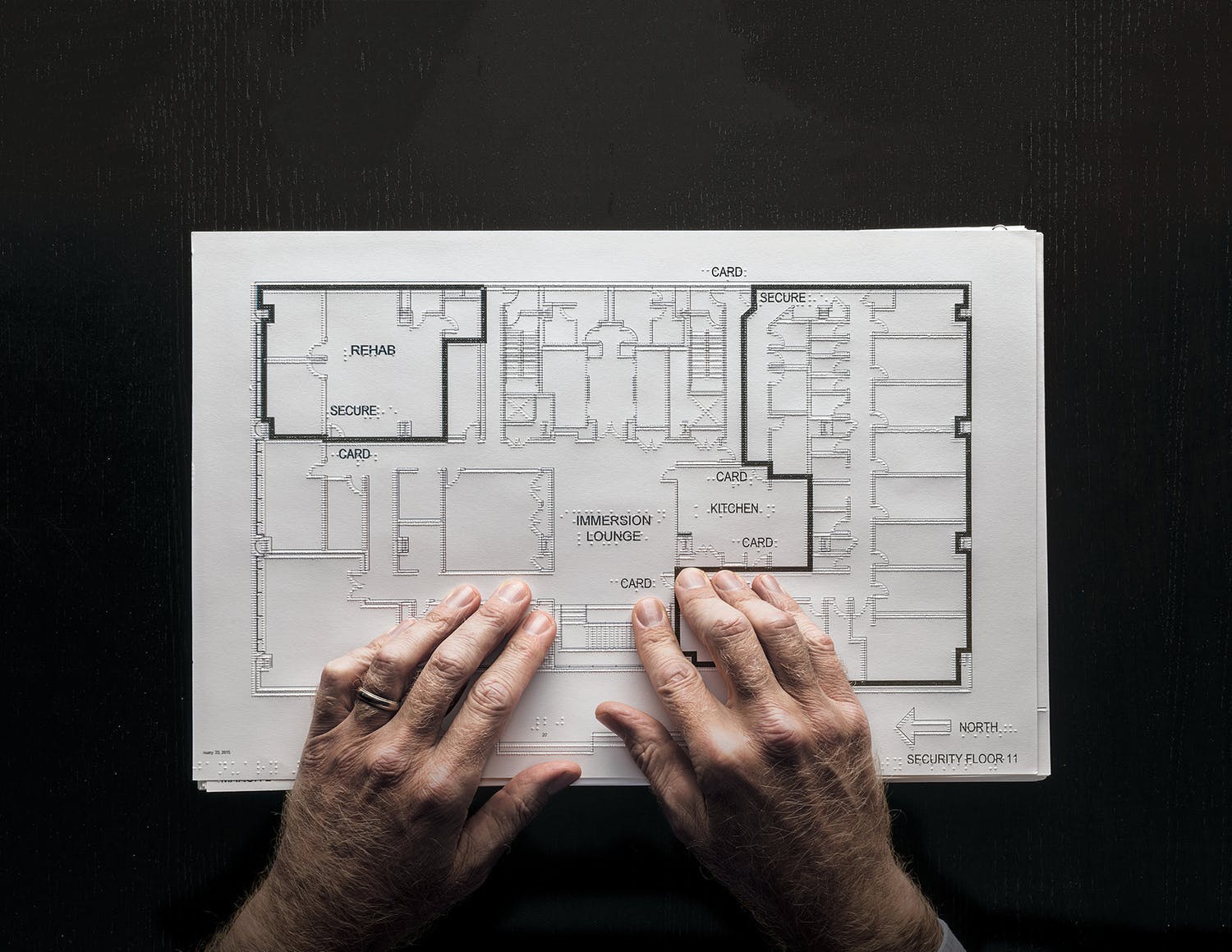Are public venues really meeting all the requirements to properly accommodate blind or visually impaired people?

Have you ever thought about the main difficulties a blind or visually impaired person can experience when trying to access buildings and services?
The first challenge a person can experience could be the orientation: knowing in which direction to go. Another challenge is location: finding their bearings and being able to identify them. Access to written information can also be very difficult and there are always risks of falling or bumping into obstacles.
Putting yourself in the shoes of a blind person can also give you a real perspective of what it feels like and also what can improve the accessibility of your business. A good exercise to highlight any inaccessible areas would be to take a notepad and pen, and start at the front door. Make note any areas lacking consideration towards blind or visually impaired people keeping in mind orientation, location, access to written information and risks.
Some key points to take into consideration:
1. Accessible tools:
Provide a website that meets the digital accessibility standards and find useful information about the place:
- Service areas: public transport stops, location of the parking area, drop-off point,
- Description of the surroundings if the main entrance is not accessible directly from the street,
- Location of the reception point, description of the route to get there,
- Instructions for use of the access control device, if applicable.
Are your reception staff able to provide all this information over the phone? Here’s a tip: make a summary sheet that you will leave permanently near the switchboard.
2. Make the outdoor walking path detectable and safe:
The path from the access to the outdoor area to the main entrance of the building must be easily detectable and recognisable.
3. Make the main entrance easy to reach and recognise:
Make sure the walking path leading to the main entrance is well defined and clearly identifiable. However, people who are blind or have low vision need to confirm their position. For those who retain visual abilities, signage in large characters, using high-contrasting colours. And for people who cannot read, an audio beacon allows them to trigger a verbal message announcing the name of the business, using their standardized remote control or their smartphone.
4. Make indoor navigation easy and safe:
Make sure Is it possible for a blind or visually impaired person to move around safely in the facility and orientate themselves easily.
Indoor hallways should provide security, the lighting must be sufficiently intense and homogeneous, that it must not create shadows. Floor lighting should be avoided due to glare. Indoor paths must be free of any obstacle, also take into consideration overhead obstacles.
Make sure that all the stairs and lifts are in compliance with the regulations.
For the link to the full articles, follow this link
Alternatively, if you need further information on how to make facilities or services more accessible and inclusive, please do not hesitate to contact one of our team on (01) 415 12 85 or e-mail





